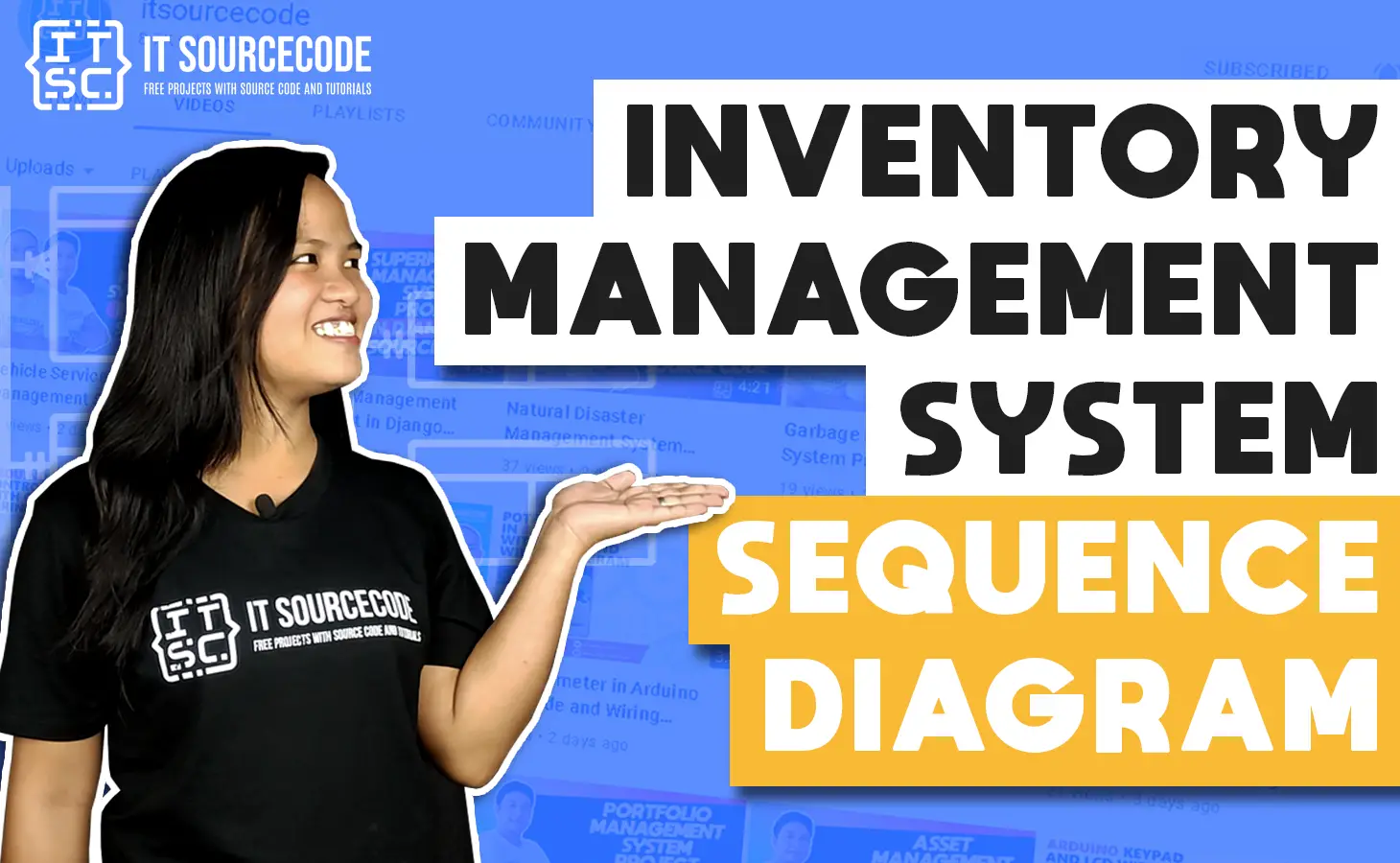The Inventory Management System Sequence Diagram is a sequence of events that should be present in Inventory Management. This diagram gives enlightenment and a guide to the programmers and developers on how should they build the system. The idea presented in a sequence diagram will give efficiency to Inventory Management system development.
Now to create the Sequence Diagram for Inventory Management System, you must be familiar first with its symbols. This is to know how would you emphasize the whole content of your system.
To have a better understanding of System development, there are a lot of UML Diagrams available on this site. Because aside from the System Sequence Diagram, there are still Use case, Activity, and other essential Diagrams needed.
Simple Sequence Diagram (UML) Inventory Management System
Now in this article, I will be showing you the Sequence illustration of the Inventory System. This design will enlighten you on how should the system or the actor approach each other. This will also teach you how would you develop the system to achieve its desired behavior.
Sequence Diagram for Inventory Management System Design
The design that I will be showing you is a detailed illustration of the sequence of events happening in the Inventory Management System.
This designed sequence diagram is able to show programmers and readers the sequence of messages between the actor and the objects.

As you can see through the illustration, the conditions and interactions are emphasized. These interactions are essential for the Inventory Management System development.
In addition to that, you can use the idea presented in this diagram as your reference or blueprint design for your system development.
Additional Knowledge on System Sequence Diagram:
The Inventory Management System is a sort of interaction sequence diagram that shows how a group of items interacts and in what order. Software engineers and business experts use these diagrams to understand the requirements for a new system or to describe an existing process.
The Inventory Management System must have a designed diagram to define event sequences that will result in a desired outcome. The series in which communications appear is more important than the message itself. The majority of sequence diagrams, on the other hand, will show what messages are transmitted and in what order they usually occur.
Conclusion
The process of ordering, storing, using, and selling a company’s inventory is referred to as inventory management. This comprises the storage and processing of raw materials, components, and completed products, as well as the administration of raw materials, components, and final products. It determines how you handle inventory management in your company. Then from the explanation given, inventory management has a lot of work to do.
To give efficiency to this issue, a system must be developed. Designing a Sequence Diagram for Inventory Management System is also a must. That is because designing a sequence diagram helps determine the must-have series of events and required objects in a system.
As a result, Inventory management software helps businesses optimize inventory levels and assure product availability across multiple channels. It gives all sites a single, real-time view of items, inventory, and orders.
And that completes our discussion fellas! And I hope that this article about Sequence Diagram for Inventory Management System will help you a lot.
Related Articles
- Library Management System Sequence Diagram | UML
- Online Shopping System Sequence Diagram | UML
- ATM System Sequence Diagram | UML
Recommended Articles from the Author
- Inventory Management System Project In CodeIgniter Free Download
- Inventory Management System Project Report – Documentation PDF
- Inventory Management System Project in C Language with Source Code
- Sales and Inventory Management System Project in VB.Net Source Code
- Inventory Management System Project using Django with Source Code
Inquiries
Now let me ask you something. What have you learned through the discussion?
May this article help you with your projects in the future!
If you have inquiries or suggestions about our topic just leave us your comments below.

